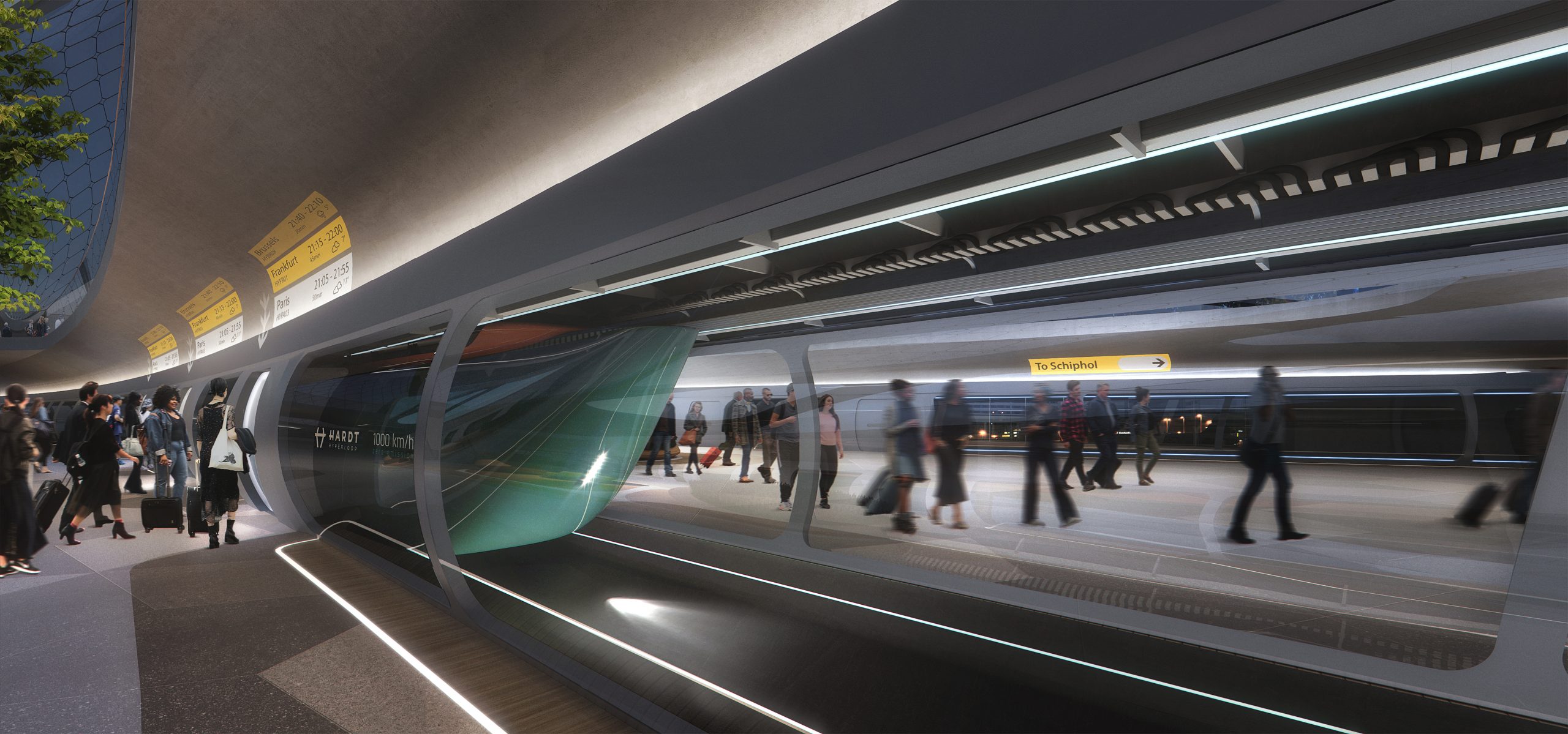
Update: The Hyperloop Development Program is going to find out whether the hyperloop is suitable for freight transport in addition to carrying passengers. The research, led by Hardt, focuses on a tube network between the regions of Amsterdam and Rotterdam. With a tube network, goods can be transported faster and road congestion decreases, the participating parties believe. More here.
Original story from December 22, 2020:
The Dutch ministry of Infrastructure and Economic Affairs is granting 4.5 million euros in subsidies to a consortium of companies and research organizations that are working on the hyperloop.
The hyperloop, which is an initiative of the Delft-based company Hardt, can travel up to a thousand kilometers per hour through a vacuum tube with the help of magnetic fields. This means of transport is able to compete in terms of speed with airplanes over shorter distances. There are no CO2 emissions because the hyperloop is powered by an electric motor.
Hardt Hyperloop was set up a few years ago by a group of students from the Delft University of Technology (TU Delft).
The organizations in the Hyperloop Development Program want to use tests and research over the next three years to demonstrate, among other things, that this mode of transport is safe and economically viable.
The European Hyperloop Center, with a laboratory and a 3-kilometer test track, is being built for this purpose to the east of the city of Groningen. Construction will probably begin next autumn and should be completed in 2022.
With the government subsidy, the initiative now has the 30 million euros it needs for the construction. Among others, Tata Steel, Vattenfall, IHC, Schiphol Airport, and the BAM construction company are working towards the Hart Hyperloop as part of the Hyperloop Development Program. The province of Groningen is contributing 3 million euros.
Also interesting: Hyper Poland speeds up the country

